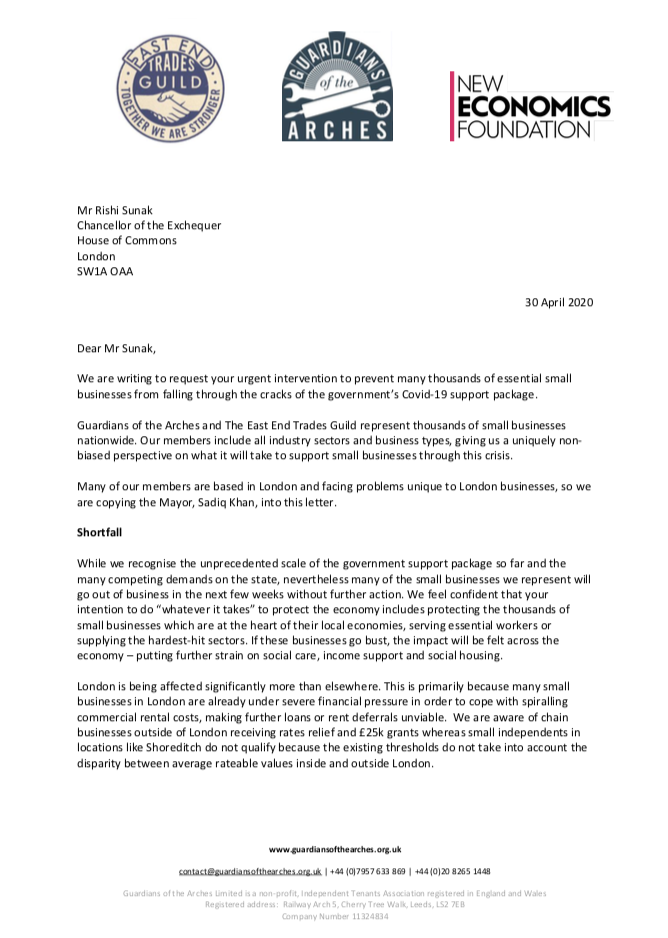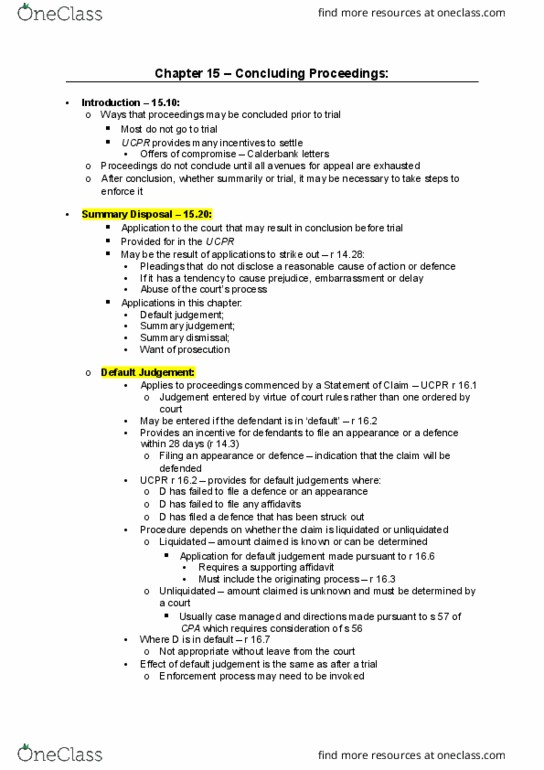However, there are still some circumstances in which Calderbank letters remain a useful mechanism. For more information, see Practice note, Calderbank offers, Standard documents, Calderbank letter from solicitors acting for a defendant (with drafting notes) and Without prejudice save as to costs settlement offer letter from a claimant (with. An offer of settlement can be made at any time by either of the parties. The offer of settlement should be in writing and clearly set out the proposal that a party wants and the reasons for the offer as an offer of settlement that cannot be understood is unlikely to be accepted by the other party. One wouldn't expect a offer in the form that has been made to state it is a Calderbank proposal. Heading the letter 'without prejudice save as to costs' is enough to make it a Calderbank offer. 1.1 - Calderbank is not a proposal, it is an offer. A Calderbank is a cost-protection measure. For this to be the case, the terms of the offer outlined in the Calderbank letter must be reasonable and comparable to the sum awarded by the court. Considering the Calderbank Offer. You should fairly consider all Calderbank offers you receive. When considering the offer, there are three important considerations to keep in mind.
Have you received a letter marked “without prejudice”? Or been made an offer on a “without prejudice basis”? For example, a settlement agreement when you are leaving your job will be marked “without prejudice”, until it is signed by both parties and becomes binding on both parties.
What does this mean, though?

Let’s take a look, shall we?
The Without Prejudice Rule
The Without Prejudice rule/principle is one which states that statements made orally or in writing and marked “without prejudice” with a view to settling a dispute will normally not be admissible in evidence against the party who makes the statement or writes the letter.
It is similar to an “off the record” conversation you may have heard of in various circles eg journalism.
The reason this principle is accepted and encouraged is that it is widely regarded as a good thing that parties to a dispute will attempt to settle their differences rather than going to Court on every occasion. Thus, there is a clear public policy justification for the rule.
Any concession offered in a without prejudice letter cannot be referred to later on if the matter is not settled and it goes ahead to Court. Therefore, if I owe you a disputed debt of €100,000 and you offer, in a without prejudice letter, to accept €70,000 in full and final settlement, and I do not accept this offer you can pursue me for the full €100,000 in Court and I cannot refer to your previous willingness to accept €70,000 as evidence that I do not owe you €100,000.
This liability of €100,000 must be disputed by me, though. If I accepted I owed the €100,000 but was merely looking for a discount then I cannot rely on the Without Prejudice label as there is no dispute about the debt or the amount owed.
Where a party makes a without prejudice the response to that offer, regardless of the content, is also privileged as the entire totality of that correspondence is privileged.
The Without Prejudice Label
Marking your correspondence “without prejudice”, however, does not mean it is truly without prejudice; your letter must have been part of an attempt to settle the dispute and there must have been legal proceedings in being or being contemplated by one of the parties. Using the label will not give any protection if the correspondence is not a genuine attempt to settle a dispute.
Thus, another way to think of without prejudice correspondence, which will have the protection later on, is without prejudice correspondence which makes some type of concession. If it does this then it is clear it is an attempt to settle the dispute.
A without prejudice letter is the opposite of open correspondence.
An open letter may contain an offer, for tactical reasons in litigation, to settle a dispute. This letter will be relied upon in Court to influence the Judge when it comes to awarding costs at the end of the hearing and if such a letter is written it should be made clear that it is open.
Two Without Prejudice Labels
There are two without prejudice labels in use:

- Without prejudice
- Without prejudice save as to costs
The Without Prejudice save as to costs letter is a Calderbank letter (learn more about Calderbank letters here). This type of without prejudice correspondence can only be referred to when the question of costs is being considered by the Court at the end of the trial.
Exceptions to the Without Prejudice Rule
There are exceptions to the rule:
- When the communications demonstrate the fact of a concluded settlement agreement
- To help interpret a settlement agreement
- To provide evidence to have a settlement agreement set aside on the basis of fraud, misrepresentation
- Where the communications are evidence of perjury or blackmail or other serious impropriety.
Summary
The rule applies to written and oral communication, and must be a genuine attempt to settle a dispute. It is the substance of the correspondence that counts, not the label, and this will be assessed objectively.
It is open to the parties where there is no dispute, for example in relation to property purchase/sales, that all correspondence will be without prejudice/subject to contract until there is a binding contract in place. This is the practice in conveyancing in Ireland.
Calderbank Letter Template Printable
Without prejudice correspondence attracts joint privilege which means that it can only be waived with the consent of both parties.
For most of my career as a practising family lawyer the ‘Calderbank offer’ was a very commonly used tool in the resolution, or attempted resolution, of financial remedy disputes following divorce. Much to the disappointment of many family lawyers it was abolished in 2006, but it seems that it is not quite dead after all…
For the benefit of non-lawyers (and perhaps also those who have recently qualified) I will briefly explain the concept of the Calderbank offer.

A proposal to settle a case (and here, for the sake of simplicity, I am just referring to financial remedy cases) can either be an ‘open’ proposal or a ‘without prejudice‘ proposal. An open proposal can be shown to the court, by either side, which means that the party making the proposal is committed to it and cannot withdraw it and then seek more. A without prejudice proposal, on the other hand, cannot be shown to the court, unless the proposal is accepted. Accordingly, the maker of the without prejudice proposal can still seek a better settlement at court if the proposal is not accepted.
The Calderbank offer (named after a 1975 case of that name) is a proposal that is made without prejudice save as to costs. This means that if the proposal is not beaten by the other party then the maker of the proposal can show the proposal to the court and request the court to order the other party to pay their costs from the date of the offer, on the basis that those costs would not have been incurred if the offer had been accepted.
However, the Calderbank offer was abolished when new costs rules were introduced in 2006. Open offers were to become the norm and the starting point in all financial remedy cases is that there should be no order as to costs – i.e. each party should pay their own costs.
Calderbank Letter Template Word
As I indicated above, the Calderbank offer was popular with many family lawyers. Indeed only recently Resolution, the association of family lawyers, debated whether it should be reinstated and fifty per cent of those who took part in the debate said that it should.
But a judgment published the other day (although handed down back in April) indicates that we have not seen the last of Calderbank offers (at least in respect of financial remedy claims) after all.
WD v HD concerned an appeal by a wife against the variation of a maintenance/school fees order. I don’t need to go into the details of the case here, but the issue arose as to whether or not a Calderbank offer is admissible in relation to an appeal. Considering the matter, Mr Justice Moor looked at the current costs rules, which say that no offer to settle which is not an open offer to settle is admissible at any stage of the proceedings (except as provided in relation to financial dispute resolution hearings). He concluded that the rule only referred to first instance proceedings, and therefore did not apply to appeals. A Calderbank offer is therefore admissible in relation to an appeal.
Calderbank Letter Template Pdf
Mr Justice Moor added the important point that: “By coming to that conclusion, there is the added advantage that litigants are able to protect themselves in appeals where the costs of the appeal can be totally disproportionate to the amount at stake.”
So, reports of the death of Calderbank offers in relation to financial remedies cases were, it seems, premature. On the other hand whether we will see their full return (as many would like) is, on the other hand, another matter.
Calderbank Letter Template Online
The full report of WD v HD can be read here.



